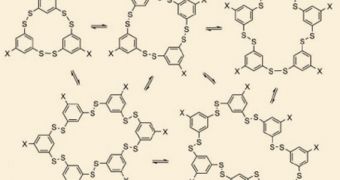A collaboration of chemists based in the United Kingdom and The Netherlands has recently discovered that a new type of molecular self-replicating system can be accurately controlled by modifying the mechanical forces that are exerted onto it. The finding adds new meaning to the expression “shaken or stirred,” and promises to facilitate the development of a host of new technologies, Chemistry World reports.
The team says that the system it developed is very peculiar in the sense that the very patterns of self-replication change when the forces acting upon it are modified. This is an intriguing discovery, the experts add, saying that it could hold tremendous implications for the theories seeking to account for how life first developed on our planet. The research group was led by scientist Sijbren Otto, who is based in The Netherlands, at the University of Groningen. The initial study objective was to look at how solutions containing short sequences of peptides underwent the process of self-assembly.
Generally, these peptides can form ordered structures known as macrocycles. They are made up of three to seven rings, each containing peptides that have phenyl ring head groups. These chemical groups contain pairs of sulfide groups, which are capable of locking the molecules together. The end result is increasingly complex macrocycles, each of them containing various numbers of rings. What amazed the research group was to learn that six- or seven-ringed macroscycles were capable of basically recognizing their own kinds, and then self-assembling into larger, tubular stacks.
These stack then developed into long fibers, containing only macrocycles with a certain number of rings. When this happens, the chemists learned, the entire solution is pulled out of balance, and the odds begin to favor the development of six- or seven-unit rings. This is essentially the basis for the process of self-replication. But the research was not without difficulties. “Initially we were only stirring our solutions, but we were finding we could not reproduce our experiment,” Otto says. “We decided stirring was too difficult to control so we started to shake the solution. We then found that we only produced fibers consisting of the six-unit macrocycle, but not the heptamer,” he adds.
The work also underlined the fact that shaking and stirring produced different effects at a molecular level, as each type of mechanical force destroys a particular type of bonds. The team believes that these experiments demonstrate both self-assembly and self-replication. “The possibility of simple mechanical forces as a evolutionary selection pressure suggests a plausible step in prebiotic chemistry which could help to explain the formation of biopolymers and complex molecules in the absence of enzymes,” concludes University of Newcastle scientist Daniel Frankel.

 14 DAY TRIAL //
14 DAY TRIAL //